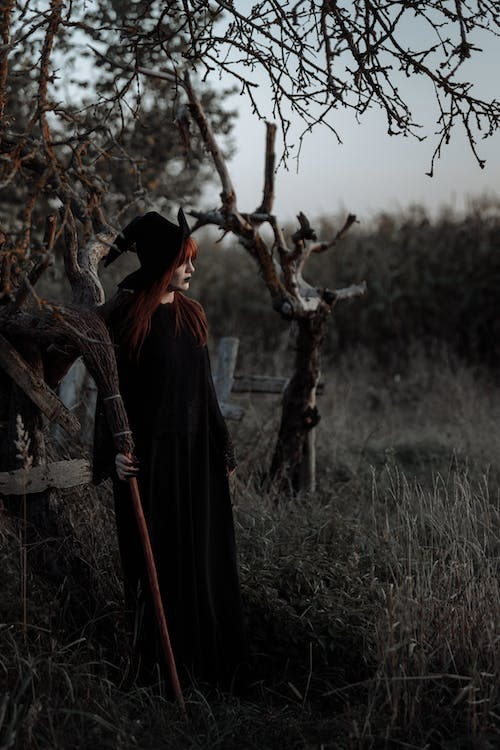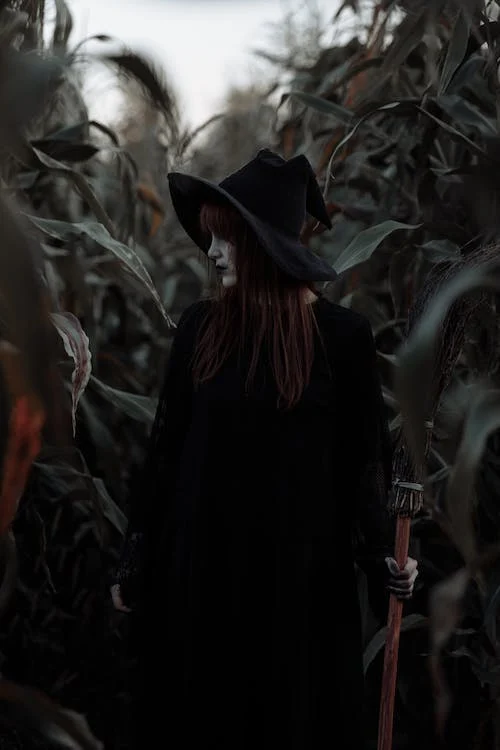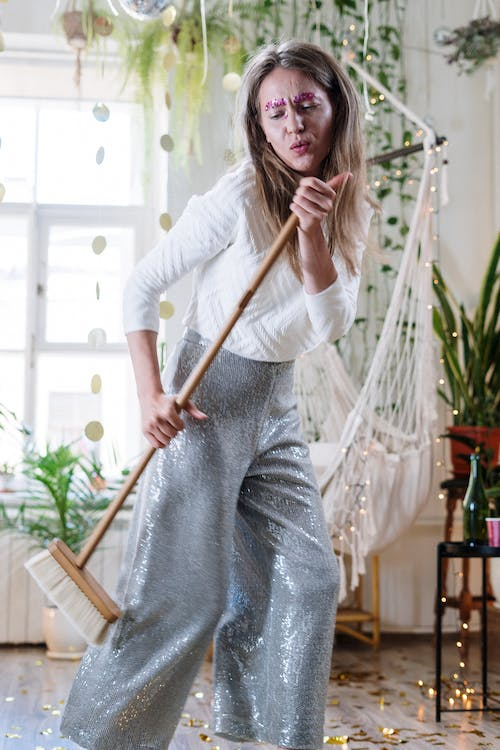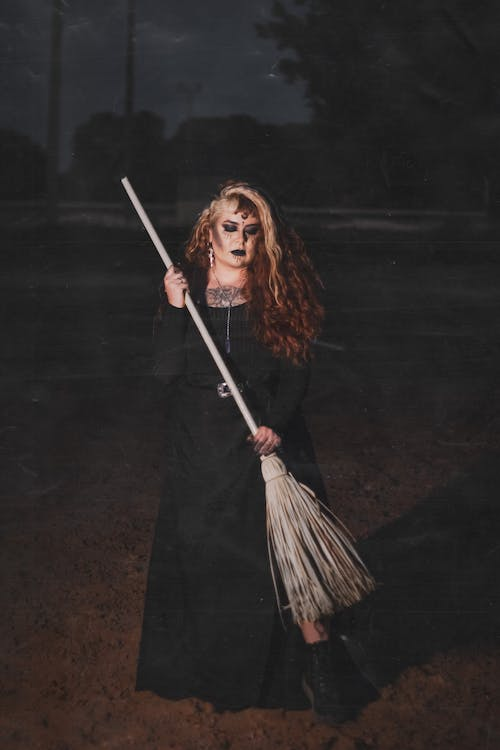The Deep-seated Symbolism of Jumping the Broom
Jumping the broom, a fascinating custom rooted in numerous cultures, showcases a delicate interplay between spiritual symbolism and societal norms. It serves as evidence of how rituals that cut across cultural boundaries can endure and give couples a meaningful way to connect with their ancestors and make a sign of unity.
The act of jumping the broom continues to be a vibrant symbol of comradery, commitment, and the expectation of fresh starts even as traditions evolve, adapt, and blend over time.

Key Takeaways:
- Whether among Romani people in Europe or African-Americans in the U.S., this ritual has distinct cultural imprints, each with its narrative and symbolism.
- This act serves as a metaphorical threshold, allowing couples to step into a new chapter together, emphasizing commitment and shared future.
- Beyond the physical act, it represents a union of souls, echoing themes of unity, blessings, and spiritual growth.
- While the core essence remains, contemporary ceremonies often incorporate this tradition with personal tweaks, resonating with individual beliefs and cultural backgrounds.
The Historical Evolution of the Tradition
Tracing back the origins of jumping the broom, we embark on a journey that traverses continents, cultures, and centuries. This ritual, as it evolved, absorbed the influences of the societies it touched, leading to a rich tapestry of meanings and purposes.
- African Origins: In some African cultures, the broom symbolizes the sweeping away of past troubles and welcoming new joys.
- Romani Adaptation: Among Romani communities, it was seen as a public declaration of setting up a household.
- African-American Resurgence: During slavery in the U.S., when formal marriages were forbidden, enslaved Africans adopted and adapted this ritual, granting it deep emotional and spiritual significance.
Spiritual Significance vs. Social Norms
While the spiritual essence of this ritual is undeniable, one cannot overlook the societal pressures and norms that might have influenced its perpetuation. This duality provides an intriguing lens to understand the interplay of faith and societal expectations.
- Spiritual Depth: For many, jumping the broom is akin to taking a leap of faith, entrusting their future to divine guidance.
- Societal Anchors: Over time, societal norms and the desire for a recognized union, especially during times when formal marriages were denied, reinforced the practice.

Marriage Rituals: A Confluence of Mind and Spirit
Marriage rituals are more than mere customs; they’re a confluence of our psychological needs and spiritual expressions. These practices, rooted in ancient wisdom, reflect our innermost desires and beliefs, binding two souls in a shared journey.
- Symbols of Unity: Rituals often employ universal symbols, like rings or brooms, resonating with our collective psyche’s notions of unity and eternity.
- Emotional Release: The act of performing a ritual provides couples with a sense of closure from their individual pasts and a collective step towards a shared future.
From Simple Acts to Meaningful Rituals
What starts as a simple act, with time and collective belief, can transcend into a ritual brimming with symbolism. The journey of such practices, like jumping a broom, underscores the human need for imbuing actions with deeper intent.
- Evolution Over Time: As societies evolve, so do their customs, reflecting changing beliefs, values, and circumstances.
- Symbolic Layers: With each adaptation, new layers of meaning are added, enriching the ritual and increasing its resonance across generations.

Psychological Implications of Marriage Traditions
The customs we adhere to during weddings aren’t mere traditions; they cater to our inherent psychological needs. From seeking blessings to asserting commitments, these acts offer tangible expressions for intangible emotions and aspirations.
- Symbolism and Closure: Rituals like jumping the broom provide a symbolic end to one phase and herald the beginning of another.
- Setting Precedents: These traditions subtly set expectations and dynamics for the impending marital journey.
Rituals and their Role in Setting Relationship Dynamics
Traditions play a pivotal role in setting the course of a marriage. They serve as shared experiences that can set mutual expectations, foster understanding, and create lasting memories.
- Tone-Setting: The nature and execution of rituals can subtly influence the dynamics of the relationship, reinforcing roles and mutual respect.
- Reiteration of Commitment: Each ritual, in essence, is a reaffirmation of the couple’s commitment to one another.
The Contemporary Relevance of Jumping the Broom
In today’s globalized world, where traditions often intermingle, the act of jumping the broom retains its charm and significance. Modern couples, while cherishing their roots, often seek adaptable rituals that resonate with their personal beliefs and worldviews.
- Modern Adaptations: Today, many couples incorporate this tradition with a contemporary twist, ensuring it aligns with their personal and shared values.
- Symbolic Relevance: Despite societal shifts, the symbolic weight of this act remains, representing unity, commitment, and the hope of shared tomorrows.
Adapting Traditions in a Modern World
As societies evolve, so does their approach to age-old customs. While the core essence remains, the presentation and interpretation often see modern influences, reflecting contemporary values and beliefs.
- Personalization: Today’s couples often tweak traditions to resonate with their personal narratives, ensuring they’re meaningful.
- Merging Cultures: With intercultural marriages on the rise, traditions like jumping the broom witness interesting amalgamations, celebrating the union of diverse backgrounds.
Interpreting the Nuances: Beyond the Act
To truly understand a ritual, one must delve beyond the act and into the layers of meaning, belief, and intent it encapsulates. Marriage traditions, replete with symbolism, offer a rich tapestry of insights into our psyche, spiritual beliefs, and societal values.
- Layers of Meaning: Each ritual, while universally recognized, can hold personal significance, influenced by individual experiences, beliefs, and cultural backgrounds.
The Power of Shared Symbolism in Relationships
Engaging in shared rituals can foster a stronger bond between partners. This mutual participation creates shared memories, reinforcing the bond and understanding between the couple.
- Reinforcing Unity: Rituals serve as shared experiences, underlining the couple’s journey together.
- Strengthening Bonds: Engaging in symbolic acts can enhance mutual understanding and deepen the emotional connection.
The Spiritual and Emotional Weight of Symbols
Symbols, whether in rituals or daily life, hold profound resonance in our psyche. They serve as anchors, linking our present actions to past traditions and future aspirations, thus playing a pivotal role in our spiritual journey.
- Deep Resonance: Symbols strike a chord deep within, connecting with our inherent beliefs and emotions.
- Spiritual Connect: Engaging with symbols can elevate our spiritual experiences, creating a bridge between the tangible and the intangible.

FAQs
Why has jumping the broom survived as a tradition in many cultures?
Jumping the broom’s enduring appeal can be attributed to its varied significance. It appeals to ideas of fresh starts, blessings, and a shared future in addition to acting as a symbol of cooperation and dedication.
How can couples incorporate the act meaningfully in their ceremonies?
Understanding the cultural and historical nuances of this tradition is crucial for couples who are interested in incorporating it. Personalizing the act can make it more meaningful and pertinent to their story, perhaps by using a broom with special meaning or by adding special elements.
Are there variations to the broom-jumping ritual across different cultures?
Absolutely. The fundamental act might be the same, but subtleties in how it is carried out, its symbolism, and the beliefs that go along with it may differ, reflecting the unique cultural imprints and historical influences of each community.
What are the common misconceptions about the ritual?
There are a lot of myths about this ritual, from where it came from to what it actually means. Some mistakenly think it is unique to one culture, and others might interpret its symbolic meanings incorrectly.
How can one explore the personal significance of such traditions in their own spiritual journey? Introspection, research, and discussions can serve as the first steps in personal exploration. Exploring the past, comprehending one’s own beliefs, and getting advice from spiritual elders or leaders can all provide insightful information.
References:
Mbiti, J. S. (1990). African Religions & Philosophy. Heinemann.
Smith, E. D. (2000). African American Folktales: Stories from Black Traditions in the New World. Pantheon Books.
Leave a Reply